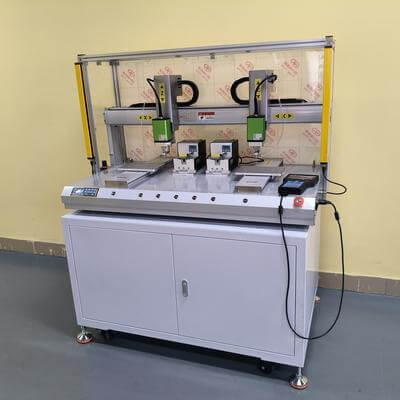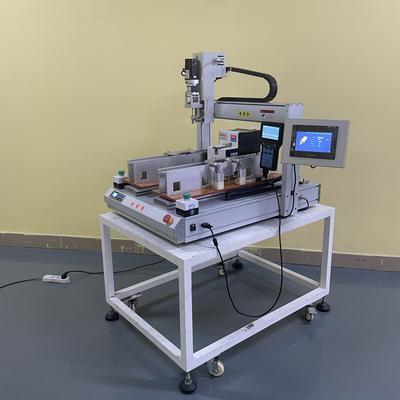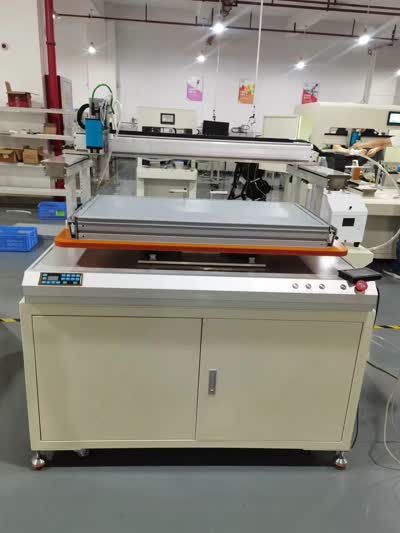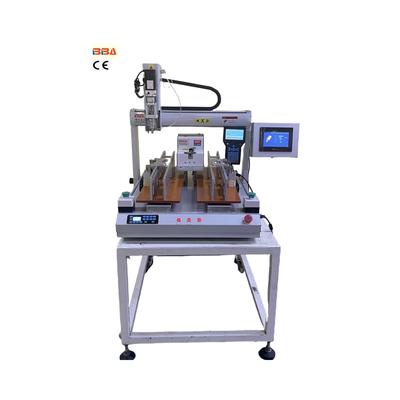Vision-Guided Desktop Screwdriver Systems | Precision Automation

| Product Name | Applicable industries |
| Inline Screw Locking System | Consumer Electronics Assembly |
Aligning Vision Systems with Desktop Screwdriver Arms
In industrial automation, the convergence of precise motion control and intelligent sensing unlocks transformative possibilities. When vision-guided systems are seamlessly integrated with agile desktop screwdriver arms, manufacturers gain unprecedented capabilities for delicate assembly tasks requiring micron-level accuracy. This synergy addresses critical challenges where traditional automation falls short—particularly in micro-scale operations demanding both visual feedback and physical dexterity.
The Convergence Architecture
Successful alignment hinges on a layered integration framework. Machine vision cameras first capture high-resolution imagery of target components and screw placement sites. Sophisticated algorithms then analyze spatial relationships, measuring deviations as small as 0.01mm. This spatial data dynamically calibrates the screwdriver arm’s path-planning system, compensating for thermal variations, vibration drift, or component misalignment. Crucially, the systems operate on closed-loop feedback, with each screw placement verified in real-time—preventing cross-threading while generating traceability logs.
Overcoming Operational Challenges
Synchronization latency posed the greatest technical hurdle. Early integrations incurred milliseconds of delay between visual recognition and mechanical response—catastrophic for sensitive tasks. Our solution combines three innovations: direct hardware triggering synchronizing camera exposure with robotic movement; optimized optical filters eliminating ambient-light distortion; and adaptive torque control adjusting insertion force based on visual surface analysis. These refinements enable consistent performance even against reflective materials like polished aluminum or dark PCBs.
Flexible Micro-Assembly Applications
This integrated approach delivers tangible advantages where miniaturization meets precision:
- Medical Device Manufacturing: Secure M1.2 screws in surgical instruments under ISO-5 cleanroom conditions
- Electronics Assembly: Sub-millimeter fastener installation on densely packed circuits with clearance under 0.3mm
- Automotive Sensors: Error-proof mounting of fragile LiDAR components with positional accuracy ±5 microns
By eliminating manual handling, enterprises report 92% reduction in cross-threading incidents and 40% faster cycle times in high-mix production runs.
Future Focus: Embedded Intelligence
The next development phase moves beyond reactive corrections to predictive calibration. Deep-learning models will forecast thermal expansion effects on joint tolerances using historical installation data. Simultaneously, edge-computing modules will enable visual anomaly detection—identifying micro-cracks or plating defects before fastener engagement. Early trials indicate this will further reduce defect rates by 33% while extending maintenance intervals through predictive wear analytics.
As manufacturing increasingly demands micron-level precision in compact environments, the marriage of vision systems with desktop screwdriver arms evolves from convenience to necessity. This integrated infrastructure transforms intricate tasks into scalable processes while establishing new benchmarks for accuracy, reliability, and traceability in automated assembly—proving that true efficiency emerges when sensors guide tools as harmoniously as eyes guide hands.


